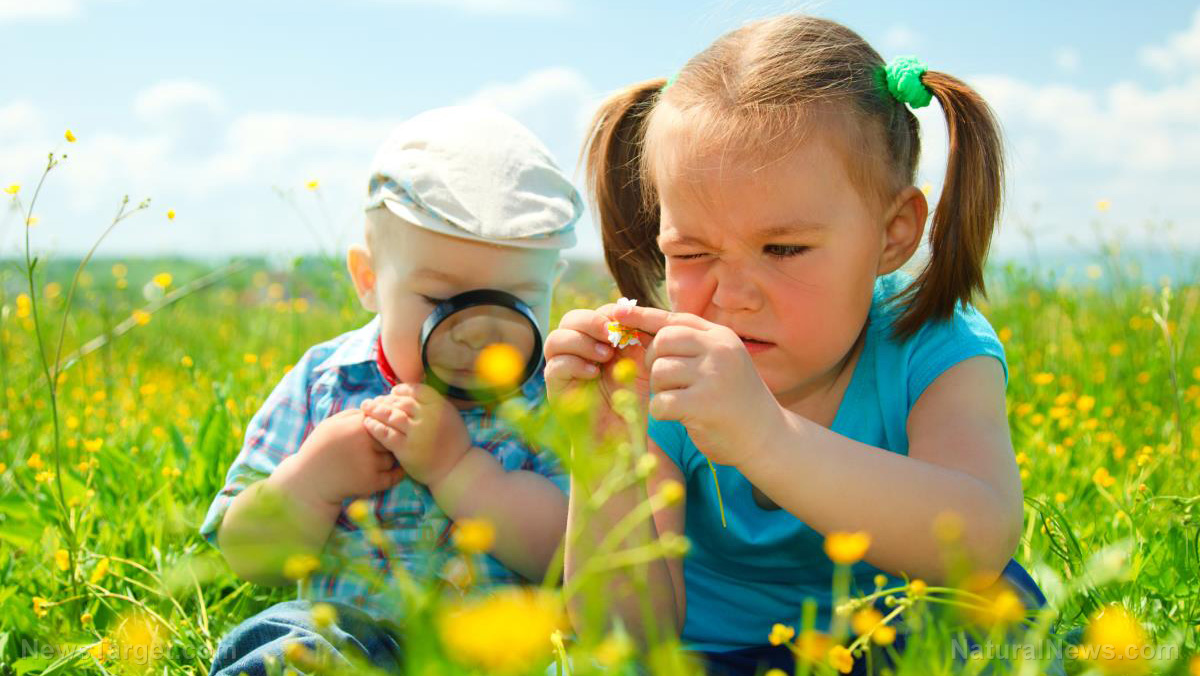Why you should learn about herbs in your area: Wild edibles and medicinal plants can offer food security
10/28/2018 / By Tracey Watson

Food insecurity caused by drought, war, poverty and high rates of population growth has left around 800 million – or one in nine – people chronically hungry and unable to derive the necessary nutrition from their daily food supply. The United Nations Food and Agriculture Organization (FAO) explains that since 80 percent of people in the most affected countries live in rural areas and depend almost entirely on subsistence agriculture, food insecurity can only be reversed if these people can grow their own food in a sustainable way.
A study published recently in the African Journal of Food, Agriculture, Nutrition and Development (AJFAND), notes that part of the problem is the fact that humans currently rely on 30 species of plants to supply 90 percent of the world’s nutritional requirements. This over-reliance on a handful of plants creates supply and demand issues that exacerbate the world’s food insecurity problem. This issue could be avoided entirely if each country focused on the production of crops that are inexpensive and locally available.
The study in the AJFAND focused on the African country of Uganda, where food insecurity affects as many as one in three households in certain areas. Though this beautiful country has been blessed with a rich diversity of plants and herbs, the people of Uganda rely almost exclusively on foods that are not always readily available and which lack essential vitamins, minerals and other micronutrients.
The AJFAND reported:
The number of non-cultivated edible plant species in Uganda has been reported to be far higher than those cultivated. The therapeutic and nutritive potentials of such plant species to manage various lifestyle-related diseases has led to an increase in their consumption. Many of these wild plant species contain a variety of secondary compounds such as flavonoids, alkaloids, coumarins among others, to which the therapeutic effects of such plants have been attributed.

The widespread empirical use of wild plants demands accurate and reliable information on their potential benefits and prospective products. Unfortunately, due to limited research, the knowledge on wild plant species currently lags behind that of cultivated species. This is despite their widespread consumption especially in rural areas in Uganda.
Over the past five or six decades, many developing nations have shifted away from traditional farming methods and have embraced Western methods which promise to increase both yields and food stability. Unfortunately, however, with the passage of time, many countries have realized too late that monocropping is unsustainable, resulting in pollution, pest issues and plant diseases that cause serious food supply issues.
An earlier Natural News article noted:
Monoculture is centralized agriculture, a corporate farming model that places an all-or-nothing bet on the success of just a few crops. If these crops fail, or if the system proves to be lacking in other ways — a lack of food diversity means a lack of nutrition options, which spells public health disaster — then the entire food supply takes a hit.
The logical solution to this problem is to focus on ensuring a safe food supply for your family by cultivating your own fruits and veggies. It is also vitally important to start learning about the plants and herbs that grow wild in your area and that are safe to eat. These plants are usually adapted to local growing conditions, making them more drought resistant and more readily available. They are often also a treasure trove of vitamins, minerals and other vital nutrients.
Skilled Survival lists 11 of the best wild edible plants, including:
- Dandelions: The entire plant is safe to eat.
- Cattails: The tips and white colored bottoms of the stalks are edible.
- Wild asparagus: Cut the stalk as close to the ground as possible, and a new stalk will grow back in no time, providing an ongoing food supply.
- Milk Thistle: The leaves, stalks and roots of this plant are all edible.
- Clover: This plant is common everywhere, and is very high in protein. Raw clover can cause indigestion in some people.
Though it may be a bit time-consuming, learning about the wild herbs and plants growing in your area might make all the difference to your chances of survival one day.
Read EmergencyMedicine.news for more coverage.
Sources for this article include:
AJFAND.net[PDF]
Submit a correction >>
Tagged Under:
bug out, emergency food, food freedom, food independence, food security, Food storage, foraging, Herbs, off grid, Plants, preparedness, prepper, prepping, survival, survival food, survival skills, survivalist, wild edibles, wild foods
This article may contain statements that reflect the opinion of the author





















